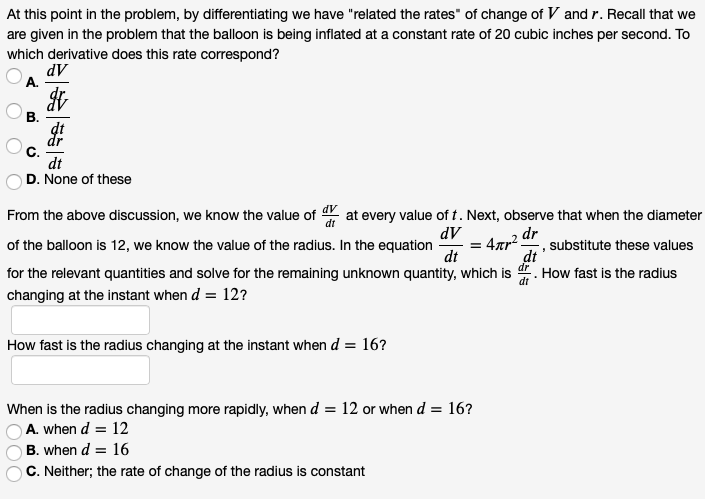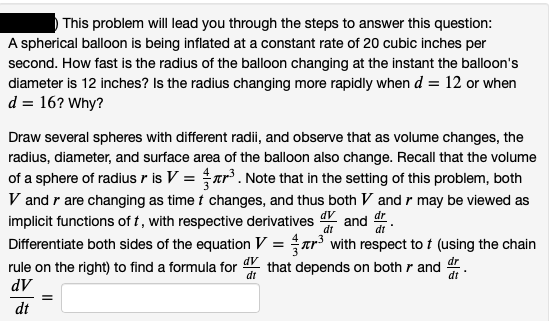) This problem will lead you through the steps to answer this question: A spherical balloon is being inflated at a constant rate of 20 cubic inches per second. How fast is the radius of the balloon changing at the instant the balloon's diameter is 12 inches? Is the radius changing more rapidly when d = 12 or when d = 16? Why? Draw several spheres with different radii, and observe that as volume changes, the radius, diameter, and surface area of the balloon also change. Recall that the volume of a sphere of radius r is V = ar. Note that in the setting of this problem, both V and r are changing as time t changes, and thus both V and r may be viewed as implicit functions of t , with respective derivatives and d. Differentiate both sides of the equation V = r³ with respect to t (using the chain rule on the right) to find a formula for that depends on both r and . dt di dt AP dt
Unitary Method
The word “unitary” comes from the word “unit”, which means a single and complete entity. In this method, we find the value of a unit product from the given number of products, and then we solve for the other number of products.
Speed, Time, and Distance
Imagine you and 3 of your friends are planning to go to the playground at 6 in the evening. Your house is one mile away from the playground and one of your friends named Jim must start at 5 pm to reach the playground by walk. The other two friends are 3 miles away.
Profit and Loss
The amount earned or lost on the sale of one or more items is referred to as the profit or loss on that item.
Units and Measurements
Measurements and comparisons are the foundation of science and engineering. We, therefore, need rules that tell us how things are measured and compared. For these measurements and comparisons, we perform certain experiments, and we will need the experiments to set up the devices.


Trending now
This is a popular solution!
Step by step
Solved in 2 steps







